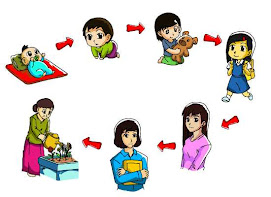Solitary play happened at 1-year and below when a baby played alone to entertain himself. Solitary play is a type of play that we usually observed among babies below 1-year old and from solitary play they moved on to onloooker play. Onlooker play occured when a child watches another child or children at play and doe not become an active participant but will be amused or entertained by their play. Occasionally, these toddlers will look at each other playing but it’s just a curious phrase in their development.
I put Maximus into a group play for at least an hour in a mall when Jin was busy negotiating with a car-dealer. In the beginning it was just solitary play on the rocking pony. When I wanted to place him with the other children, he whined a little. But slowly he started to explore the environment, looking at the play equipments and the other children playing, screaming and running around. He was just curious and checking out those equipments one at the time.
Then he noticed the play house, started to crawl into it. Playing peek-a-boo with me for a short while before he proceeds to exploring on his own. Then, those children came into the play house to play together. Maximus was just looking at them but not playing with them. So the children started to lose interest in them.

This is an example of how Maximus has switched his type of play from being into a solitary player to be an onlooker player. It’s common for babies like Maximus to just enjoying playing together with other children but not with them. I hope to give Maximus more exposure to experience those different types of play in his childhood development since I am equipped with the theory, now it’s the practical or experimental stage.
It’s really interesting observing Maximus in his play. Playing in the early years in childhood is a learning phase and helps them to learn, nurture and develop. Especially when Maximus is turning one, I am sure he will go through a different milestone in his developmental stages – equipped with different skills and knowledge. Hence, I wish to provide him an extended environment for him to explore and learn rather than being cooped in his on environment (at home) continuing with his solitary play. In additional, with being into the parallel play after 1-year-old, soon Maximus will be able to ease into associative play at 3-year-old and cooperative play at four.
Parallel play - children play separately at the same activity at the same time in the same place but do not play together.
Associative play - chidlren are still focused on seperate activities but there is a considerable amout of sharing, lending, taking turn or expansive coomunication.
Cooperative play - represent the hight level of social maturity. Play actively with a common goal and will be working together to acheive the goal.




No comments:
Post a Comment